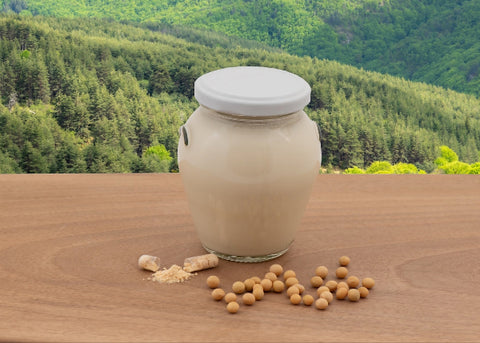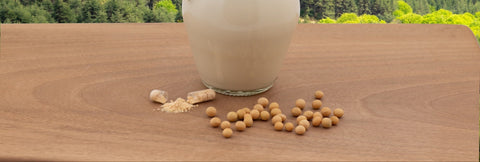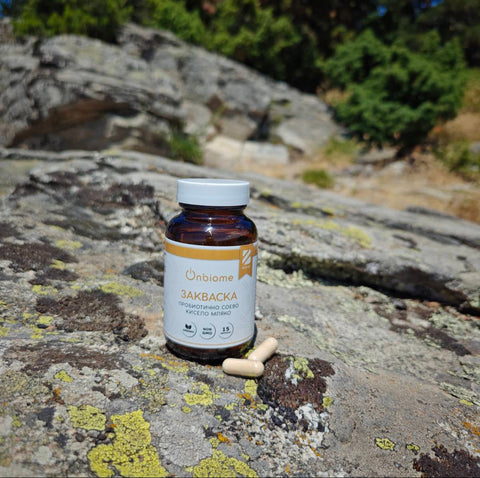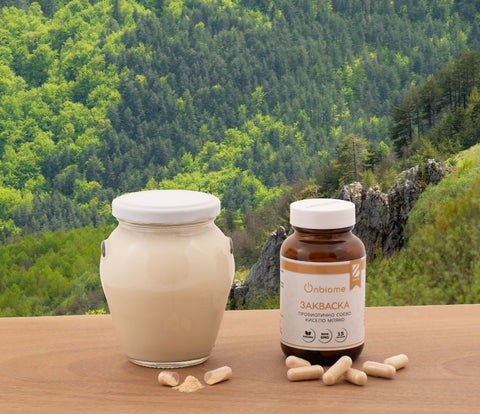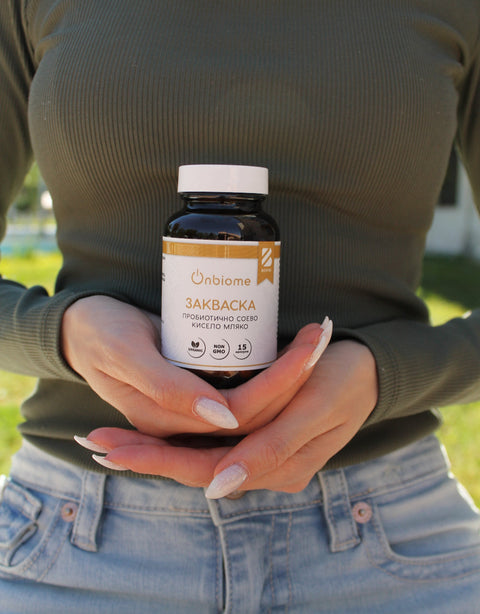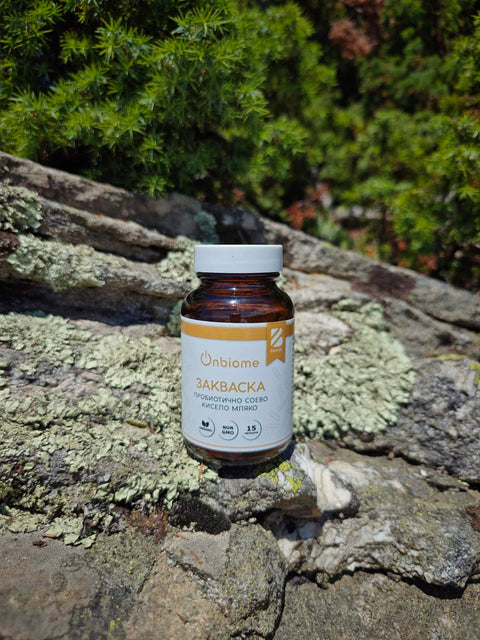Onbiome provides controlled fermentation of soy milk in the comfort of your home, ensuring the development of a rich flavor profile, expressive aroma, and creamy texture. The result is a high-quality probiotic product with optimal organoleptic characteristics, made to the highest standards of home production.
Preparation method
- Heat fresh soy milk to 42 °C (108 °F). Use a cooking thermometer to measure the temperature accurately.
- Remove the required number of capsules from the refrigerator and let them reach room temperature. One capsule is sufficient for 1–1.5 liters of milk.
- Pour a portion of the warmed soy milk into a jar with a lid and add the prepared starter culture from the capsules in the amount needed for fermentation. Open the capsules and pour their contents into the jar - do not add the entire capsule as it dissolves poorly.
- Mix thoroughly (shake) until the starter is fully dissolved, usually 10–15 minutes.
- Warm the jars and lids to 42 °C (108 °F) and keep them warm until pouring.
- Pour the inoculated milk from the jar into the main quantity of milk and mix thoroughly.
- Pour the inoculated milk into the warm jars and seal with lids.
- Let the milk ferment in the jars at 42 °C for 6–8 hours without stirring. To maintain the fermentation temperature, use a yogurt maker or an oven set to 42 °C.
- Remove the jars with now coagulated milk and leave them at room temperature (around 21 °C / 70 °F) for 2–3 hours.
- Store the jars in the refrigerator for 8 hours.
The quality of the finished soy yogurt depends on the quality of the fresh soy milk used. If the results are unsatisfactory, try using a different milk source.
Practical tips
You have followed the preparation method correctly, adapting it to your household, routine, and needs. You now have homemade probiotic soy yogurt. For those who want to achieve finesse and perfection, here are some practical tips:
Always use freshly prepared soy milk at home. To obtain high-quality soy milk, you need good-quality soybeans with a sufficiently high protein content. Typically, these are varieties with spherical beans (round like little balls) and pale yellow color.
For homemade soy milk, use highly purified or distilled water, as live fermentation is about to take place.
Avoid raw soy milk. Raw soy milk is unsuitable for fermentation, so make sure the soy milk is properly cooked, which usually takes about 10 minutes.
For a smooth coagulum, strain the soy milk through cheesecloth before inoculating to remove coarse fibers. For a smooth cream layer, remove the foam with a spoon after pouring the milk into jars.
Soy yogurt is thinner than dairy yogurt. Its consistency can be adjusted by increasing the amount of soy per unit of water.
Probiotic soy yogurt has proven benefits for women during menopause, helping to alleviate skin irritation when applied topically. It is also excellent for preparing various meat-free dishes and spreads.

